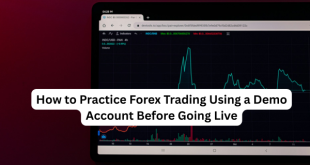The foreign exchange (forex) market is one of the most exciting financial markets in the world, with daily volumes exceeding $6 trillion. While many are drawn to the promise of quick profits, real success in forex trading requires a solid strategy—especially for beginners.
In this post, we’ll walk you through the steps to build a simple, effective, and profitable forex trading strategy from scratch.
Step 1: Understand the Basics of Forex Trading
Before diving into strategy building, it’s essential to understand the basics:
- Currency Pairs: You trade one currency against another (e.g., EUR/USD).
- Pips: The smallest price movement in a currency pair.
- Lots: The size of your trade. A standard lot = 100,000 units.
- Leverage: Borrowed capital to increase your position size.
- Bid/Ask Spread: The difference between the buy and sell price.
Take the time to get familiar with these concepts. Use demo accounts to practice if you’re brand new.
Step 2: Choose Your Trading Style
Your strategy should match your personality and availability. Common styles include:
- Scalping – Quick trades that last seconds or minutes.
- Day Trading – All positions are closed by the end of the day.
- Swing Trading – Holding trades for days or weeks.
- Position Trading – Long-term trades that last months.
If you’re just starting, swing trading is a good middle ground. It gives you time to analyze without the pressure of short-term movements.
Step 3: Select the Right Indicators
Indicators help you make sense of market movements. Common beginner-friendly indicators include:
- Moving Averages (MA): Helps identify trends.
- Relative Strength Index (RSI): Measures overbought or oversold conditions.
- MACD (Moving Average Convergence Divergence): Indicates trend direction and momentum.
For beginners, a simple strategy could be:
- Use 50-day MA to identify trend direction.
- Use RSI to find entry points (buy if RSI < 30; sell if RSI > 70).
Step 4: Define Entry and Exit Rules
A strategy is nothing without clear rules. Here’s an example:
- Entry Rule: Buy when the price is above the 50-day MA and RSI is below 30 (oversold in an uptrend).
- Exit Rule: Take profit when RSI reaches 70 or the price closes below the 50-day MA.
- Stop Loss: Place a stop loss 20–30 pips below the entry price to limit risk.
Step 5: Test Your Strategy (Backtesting)
Before going live, you must backtest your strategy. This means applying it to past market data to see how it would have performed.
Use tools like:
- TradingView (for charting and manual backtesting)
- MetaTrader 4/5 (for automated strategy testing)
Don’t skip this step—it reveals weaknesses in your strategy before real money is at stake.
Step 6: Keep a Trading Journal
Document every trade with:
- Entry/Exit points
- Reason for entering
- Outcome (profit/loss)
- Emotional state
Over time, your journal will help refine your strategy and discipline.
Step 7: Stay Consistent and Patient
Profitable trading isn’t about winning every trade—it’s about sticking to your rules and managing your risk. Focus on:
- Risk Management: Never risk more than 1–2% of your account on a single trade.
- Consistency: Follow your strategy even during losing streaks.
- Continuous Learning: Markets evolve—so should your skills.
Final Thoughts
Creating a profitable forex trading strategy isn’t about complexity—it’s about clarity, discipline, and consistency. Start simple, refine as you go, and always protect your capital.
Remember, in trading, slow and steady wins the race. Stick to your plan, learn from your mistakes, and the profits will follow.
 UBUCH ubuch | Honest Tech Reviews & Tutorials for Everyone
UBUCH ubuch | Honest Tech Reviews & Tutorials for Everyone




